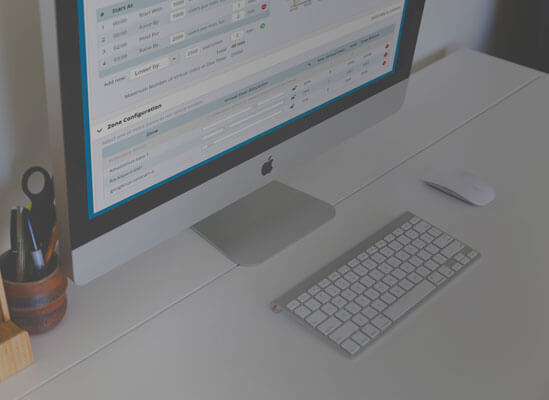Speed Up WordPress
Has your WordPress site been feeling a bit sluggish? Maybe it was loading fine when you first launched it, but now it’s slowing down. Or maybe your site is brand new, but it’s not loading as quickly as you’d like. Here are some tips on how to speed up WordPress and keep your page load times low.
Assess the Problem
Your pages should load in less than two seconds. Anything more will try your visitors’ patience. If you’re running an eCommerce site, then you want your pages to load even more quickly. Studies conducted by Walmart and Amazon have shown a 1% increase in conversions for every 100 milliseconds they shaved off their load times.
A free online tool like Web Page Speed Test can let you know how quickly your WordPress site loads when accessed from servers around the world. Re-test your website speed after each change you make to see how much time you’ve shaved off your page load time.
Compress Images
This can be huge for page load speed. Creating a png of an image and putting it up on your website without first compressing could be the difference of 2 MB or more. As an example, the image below was saved as a jpg file, then I ran it through tinypng.com for compression. This image size is 20 KB.

The exact same image saved as a png file, without running through a compression service such as kraken.io or tinypng.com, was 136 KB. As a rule of thumb, I always keep images under 100 KB to ensure my page load times aren’t negatively affected by large images. Kraken.io also offers a free account that is usually enough for those of us creating a few images here and there.
Upgrade Your Web Hosting Plan
Shared web hosting is a popular option for WordPress sites. It’s economical, but sharing space on a server with other sites means that heavy traffic to another site could affect your site. Dedicated hosting will speed up your site. If you already use dedicated hosting, you may want to upgrade your plan. Unlimited bandwidth actually does come with limits, so read the fine print.
Also be sure to host your website in the country where the majority of your visitors are located. Hosting in another country can add up to a full second to your page load time.
Check online reviews to see if your web hosting company is one of the faster ones. You may want to switch providers. While you’re at it, move to a managed WordPress web host so you won’t need a caching plugin. See more on choosing the right hosting for your website here.
Install a Caching Plugin
If you don’t use a managed WordPress host, you should install a caching plugin. Without caching, every time someone visits your site, their browser must build each page on the fly. A caching plugin creates and stores a ready-made version of that page that loads more quickly.
Change Your WordPress Theme
You probably agonized over different WordPress themes, searching for the perfect one. But some WordPress themes are built to look good but not to load quickly. Check online reviews to see if your theme is known for slowness.
It’s a hassle to change your site’s theme, but it’s a one-time effort that will make your site visitors happy every single time they access your site.
Update WordPress
If you’re running an outdated version of your theme, WordPress, or your plugins, your site isn’t loading as quickly as it could be. You should upgrade regularly.
Change Your Plugins
Just like WordPress themes, not all plugins are created equally. Check online reviews to identify the fastest plugins for each function. While you’re at it, assess whether you really need all the plugins you have installed. Plugins load separately from other page content, slowing download times. The fewer plugins you use, the more quickly your site will load.
Outsource Your Video Hosting
When you upload a video directly to WordPress, it takes up memory and bandwidth. Your web host may deliberately slow down your site if you end up using too much bandwidth. (Remember – unlimited bandwidth isn’t really unlimited.) Instead, upload your videos to Vimeo, YouTube, or another video hosting service, and then embed the video on your site.
Do You Have To Do It All?
You may get your page load times to less than two seconds by making only one or two of these changes. But two seconds is the maximum acceptable load time. If you can speed up your WordPress site even more, then there’s no need to stop at 2 seconds. Get your website optimized as much as possible to ensure happy visitors and increased conversion rates.


